In this episode, we discuss the festival of Sankranti which is celebrated by Hindus in various parts of Bharat with slightly different names and rituals. We present here, a conversation with a Hindu parent regarding the observance and celebration of this festival in the Telugu states of Andhra and Telengana. It is a conversation where the parent reminisces on the celebration of this festival in times gone by and how the celebrations have evolved over the decades. This should help Hindu parents and in this case, Hindu Telugu parents revive some of the modes of celebration of this important festival.
General Information
Subscribers are requested to look for The Hindu Parenting notification emails for new podcasts/posts in their email promotions/spam tab and personally move these into the main inbox. Thereafter all posts will be delivered to their main inbox. Thank you!
For questions that you’d like us to address, please use the form below:
Hindu Parenting Questions
For comments and suggestions, please use the comments tab or write to us at contact@hinduparenting.org
Please note that questions will not be answered on email.
Do subscribe to our substack and follow us on our social media handles
Twitter: hinduparenting
Instagram: hinduparenting
Facebook: hinduparenting
Transcript
[0:03] Rekha: Namaste. Welcome to the Hindu parenting podcast.
With Makara Sankranti around the corner, today's episode features a discussion on the festival. Makara Sankranti is celebrated, when the sun Surya enters the makara rashi known as the astrological sun sign of Capricorn in the English calendar. As with all Hindu festivals, Makara Sankranti, is celebrated all across India, parts of Southeast Asia, Sri Lanka and Nepal, but with specific regional variations in name and customs. The festival is called Pongal, Bihu, Lohri, Uttarayan, or simply Makar Sankranti, depending on where you live. To help us understand how Makar Sankranti is celebrated in the Telugu states of Andhra and Telangana, we have with us a special guest, a parent. namaskar Shashank garu, welcome to the podcast.
[1:00] Shashank: Namaste. Thank you very much.
[1:02] Rekha: So, let's start with your earliest memories of the festival. Where did you grow up? And what can you remember? What are your earliest recollections of Makara Sankranti.
[1:14] Shashank: So I grew up in Hyderabad. And I was fortunate though to have part of my family from the coastal region of Andhra. So, you know, my mom's side is from the coastal 100 region. And Telugu people will understand why I'm making this distinction because within the Telugu states, there is quite a bit of variation. So I grew up in Hyderabad and you know, everybody, I think from Hyderabad, if you ask them what your memories were about Sankranti I think they would immediately mention kite flying. Right. And that was…My memories of Sankranti really are vivid around flying of kites. You know, my dad's side, they are third generation Hyderabadis. So in their family, kite flying, this is something that, you know, every generation participates in, and they get very passionate about it. We have lots of memories.
[2:14] Rekha: Yeah, it is a simple introduction to a child, I think because kite flying is so inherently, you know, such an active thing to do, that it instantly hooks children onto the festival. So it's probably a good way to get a child interested in this festival, right?
[2:35] Shashank: Absolutely, absolutely. So if you had asked me, you know, what is your favorite festival, it would be a very tough call between Diwali and Sankranti. That is how big Sankranti was for us. And exactly for the reason that you've mentioned! Because kids, you know, for us, it's it's very exciting. We have our winter holidays. And then soon after, you know, you have your Sankranti and the whole family comes together and does it so you're right. Yeah, for a kid I think even though you don't think of it, as really a religious thing that you're doing…you know, being in the outdoors and flying kites with your family and the whole neighborhood around you…and you're competing with the neighbors…It's a very exciting time of the year.
[3:26] Rekha: That's That's wonderful. What was your typical Sankranti day like you woke up in the morning? Did you have a religious ritual that you had to follow? Because I think some of the rituals differ from place to place and even within the Telugu states, Coastal Andhra is different from Telangana. And each place has its own variations. Was there something that you had to do before you went kite flying, maybe like an oil bath. Very often. These are the things that are celebrated. Every festival in South India has an oil bath associated with it. So was that something?
[4:06] Shashank: It was on the day of actually…I think you're.. thanks for reminding me of these things. So it was. But actually on the day before, on Bhogi, right. Sankranthi is not obviously just a one day affair, there is Bhogi and then there is Kanuma after. On Bhogi, the kids would all come together after you take a bath and do your puja and sit on a few chairs, in one corner of the room. And then what at least happened in my family is, you know, we called it Bhogi Pallu. So you would get berries of a certain kind and all the kids are basically showered with berries. Right? And I spoke to my mother recently and I asked her why do you think we do this? And she said that it's winter is a harsh period of time and because you know, you don't have central heating, you don't have things like that, and nighttime temperatures can fall and for various reasons, you know, maybe the viruses are also more potent during that time. So they, she said that it, maybe it's a celebration of you know, maybe warmer weather coming. And you start by celebrating all the kids who have who are healthy and who are there with you. So, but yeah, my really only religious thing that I really vividly remember is the Bhogi pallu part.
[5:32] Rekha: This Bhogi pallu part also has an arti associated with that, if I remember right. My grandmother used to shower the children, the smallest children are often, you know, very excited by this…berries falling all over them. So they do that. And then there was an arti for the children. And that got them sufficiently excited to, you know, start the day off in this way. And then look forward to the rest of the festival. So typically, it's a three day festival, the first day being Bhogi, the second day, of course, the Sankranti, and the third day Kanuma. But let's just elaborate a little bit more on the kite flying, which I think happened on the second day, is that right?
[6:22] Shashank: That's right. So it has happens on the second day, on the day of Sankranti. It would start really with sunrise, right? Like during sunrise, when you have twilight period, right? At that time, we would start flying what we called as light patang, right, so you will basically have a small candle that is attached to the string and you let the kite go further into the skies, and these lights, you know, basically light up the sky. So we started with that. And then by the time it's mid morning, I think it starts heating up. And the peak time is, I guess, you know, when the winds start picking up. And you know, and everybody's on the rooftops by mid afternoon, I would say. And late into the evening, you would keep flying kites. And it's obviously not just flying of kites, but you're competing with the others, right? So you're trying to cut the other guys right and at least the neighborhood that I was in, it was an older part of the city where you have multiple different communities living there side by side from, obviously, within the Hindu fold, you had like people from different cultures and different languages there. But we also had lots of, you know, people from other religions, right, we had a significant Muslim population living in the neighborhood, and we would all participate in this. And it was, in a way brought us all together. Right? So it was very, you know, I really have fond memories of that. And oftentimes, the funny thing is we, you know, people who could afford to buy better stuff would think that, look, I have better stuff here and I'm going to be dominating the skies. But then oftentimes you would see, kids from the nearby slum, flying kites from in between the buildings, and they would much better than us. So it was, was a way to be humbled by these people. Yeah. Yeah. Right.
[8:31] Rekha: This is such a lesson for the kids. Because skill, they learn so many things, one of them being skill at doing a certain thing, you know, you get better and better at an activity, say, like, kite flying, and you see that your fancy equipment is not necessarily going to make you better.
[8:47] Shashank: Exactly. Exactly. Exactly. And you know, your doing things by the book doesn't necessarily get you the results too, right.
[8:54] Rekha: Yes, the interesting thing is the community participation, which is what is lacking these days. So it is not just a celebration, should not be restricted to family but if you can build a sense of community wherever you live, that creates a lasting memory for the child because of the social activity that it involves. So that's the takeaway from here I think for the parents.
[9:23] Shashank: 100%! Because I think too often our tradition is reduced to a few things and sometimes from a very critical perspective people look at it. But just looking at Sankranti alone you can easily see that our tradition, our culture touches on literally every aspect of life. I mean, we've talked about kite flying but then there is all other traditions are also happening. While the kids are upstairs with maybe their dads and cousins, flying kites, usually the ladies in the house and your daughters, they are doing the rangolis, muggu, as we call it in Telugu. They are doing various other things that would keep them engaged. And, I'm sure they have fond memories of doing that stuff, too. And then, like you said, with the arti, it reminds me, people would sing their favorite songs. And on my mother's side, actually, it's almost like a talent show. After the lunch, we all sit together and, you know, someone who wants to read a poem will read a poem, another person might sing a song, another person might do a little dance, a kid might do that. So, you're right. I think it touches on many, many aspects. And that is, I think that that is to our advantage. We are fortunate to have the kind of culture where it's not very strictly religious, and it's not like one dimensional at all.
[10:50] Rekha: Yes, it's beautiful integration of arts, of the tradition of drawing rangolis which happens on the day of Bhogi. So there's something in a Hindu festival for every taste, this is what I firmly believe. And whether it is food, now coming to food…
Every festival has with it certain traditional foods. And with Sankranti, it does seem like jaggery and til or sesame seeds, nuvvulu, as we call in Telugu, are used. New rice, it's a time of the winter harvest. And we use til, jaggery and new rice to make many of the dishes. In neighboring Tamil Nadu it is also called pongal. So it's the new rice and foods,….sweets that are prepared with these warming foods Til also warms the body during during the cold season. So for whatever little bit of winter we have in India, this is a time that you know the body could use some warming up. And kite flying also ties into that so beautifully because you're forced to be outdoors, enjoying the morning sunshine, and let's not forget that this festival is alll about Surya Deva. So I think it comes together so beautifully.
And did you get a chance to speak to your mother about the significance of this festival? I also know that there is a Haridasa tradition in Andhra where singers go from house to house or at least they used to, go from house to house singing songs about the epics I think. Is there anything more regarding this that you wish to share with us?
[12:50] Shashank: My mother mentioned, I spoke with her just last night. And she mentioned that was big part of it, the haridasu or the haridasulu we would say. They would come every day during the month apparently, and on the last day, which I believe is Kanuma, they would show up to collect whatever, you know, people are willing to give them most likely would be, you know, if you're a farmer who's growing a certain kind of a crop, you would share some of that with him. If you're growing rice, then you would give a little bit of rice to them. So it was you know, it was a big part of the culture and then you also had what we call as Gangireddu. Right? So a bull would be decorated in a really beautiful way. And they they would teach a few tricks to the bull and they would take the bull from house to house. Yeddu in Telugu is bull of course. So there was that. And then she mentioned many other such things, which to me, the common theme there was… every class of people, every part of the society, in one way or another was celebrating through what is theirs. Right. So that is the good part of it too. Right? Everybody was not doing the same thing necessarily. Right? If you're a guy who is, good at, like singing and you know, Haridasu, right. So you would do that. And if you're, someone who's good with the cattle and whatnot, you would do that. But, the common theme is that this festival was so all encompassing that it touched on every profession, every class of people, and… she actually had a lot to say, and I'll just stop here because we want to keep it brief.
[14:51] Rekha: Absolutely. So just to recap, there's the tradition of decorating a bull and taking it around. So just think about the child who loves animals. There's something for that child as well. There's something for the child who loves art, as usual with all our festivals. And another important part that you mentioned that I'd like to touch on, is the tradition of giving. You give whatever is in your capacity, to people who don't have as much or who don't get things all through the year as we do these days. So giving is a large part of our tradition that we have, unfortunately, forgotten. It's not just about celebration as a family or celebration with friends. But giving or daanam is tied into all the traditions. And that's something which will benefit us enormously. If we revive that and just think of somebody within our community who is much less fortunate. So that's, that's the thinking, a takeaway from this that needs to be encouraged in our children?
So there's something for everybody. And I understand that you're right now not living in India [Shashank lives in Canada]. So as an NRI, as a person who doesn't live in India, do you find it hard to keep to the tradition of celebrating festivals, specifically with respect to Sankranti? Because I know you have such beautiful memories of the festival that I'm sure you'd like to pass on something to your children. So how do you handle that? And the weather also being very different from India, during this time of year, at least? How do you manage that?
[16:48] Shashank: I think it definitely is more challenging when you're living abroad in a climate that is not conducive to kite flying this time of the year. And I think what I find, though, is if parents can be a little creative, they can still find that hook that will hook the child to your culture and your tradition. Like we touched on before, there is arts, there is music, there is food. And if you want to talk about the harvest, and the harvest seasons, there is the earth science aspects to it.
So I find it a little difficult for sure. But then, if you can be a little creative, I think it's not difficult to get the child attached to the culture. What we do in our houses, is we try to do the Bhogi pallu part, we get the Telugu families together, and we do Bhogi pallu. And then, at least in our families, we also do the bommala koluvu, which is basically a display of all the toys in your house, and you have a certain theme and you try to use the toys and buy toys to show that theme in your house. We do that.
And kids, I think, you know, even though they might have different interests, I think all kids; one thing they have in common is they love stories. And I do spend time telling them stories about you know, whether it's kite flying, whether it's the other stuff that we used to do as children. And I think, through those stories, they'll understand more through stories than through like a direct, like a lecture sort of thing, right? If you sit them down and say, Hey, this is what the tradition is, you need to follow, I don't think that is as effective as taking them with you along your journey of like reminiscing about about your childhood. And I find that to be much more effective. And last year, actually, during Sankranti, my son came running to me one day and he said, Hey, my teacher asked me to do a little art project and I said, okay, then what do you want to do? And he said, Hey, you were telling me a couple of days ago about kite flying, can you help me picture that scene? And I'll do a little sketch on that. And I helped him with that. And he did a little sketch of people standing on rooftops and flying kites, and he sent that to his teacher. And his teacher not only liked it, but she said, Look, I want to learn more about your festival. So, and he came back and we did a little bit of research. And he he went back and apparently she shared details of the festival with the whole classroom. So I think the point I'm trying to make is, it's an extra effort, but a bit of creativity is all it takes to get your child involved regardless of you know, what they like.
[19:46] Rekha: This is a good point, even for people living in India, because very often when the child goes to school, they are expected…not so much expected, I think it's more self inflicted in Hindu families, that you don't take religion into school. And so we avoid all mention of our celebrations in the secular schooling that we have in India. But, you know, with so much encouragement abroad, I find that children abroad often don't hesitate because all the children bring in their traditions very proudly. And this is something that Indian parents also need to remember. And probably have the children share more freely outside the house, the little particulars. The little customs and rituals that we do at home, can be shared outside. That is a process of confidence building for the child. And people are much more open than you think. So, once you know about your identity, it's so much easier to talk about it and we should never shy away from it.
[21:09] Shashank: Right. Yeah, absolutely. Yeah. That has been my experience, actually. Yes.
[21:13] Rekha: Let's talk a little bit about the science for the child who is of a scientific bent. Let's talk a little bit about the science of this festival. It's also called Uttarayan in many places. Uttarayan is typically a time when the sun starts it's northward journey into the northern hemisphere. And apparently, many 1000s of years before, Uttarayan used to coincide with Sankranti and they no longer do because of the axial precession of the earth. It's something that children may want to investigate on their own. Uttarayan meaning - uttar is north and ayana. The Hindu year is divided into two ayanas; Uttarayana and Dakshinayana. So there is such a beautiful scientific term built into the names we give our festivals. Anything that you wish to share about this?
[22:19] Shashank: Yeah, I think the science part is definitely helpful. Because you know, it's a stereotype but I think it's not a baseless stereotype that Indian kids are generally attracted to STEM, right. So they're, whether because of parents or whether because of the environment they grew up in, they inevitably end up, majority of them in the sciences, right. So, I think the scientific angle to this whole festival of Sankranti, I think is something that any kid will find very fascinating. Not only the astronomical aspect that you just mentioned, but also the the weather patterns and the harvest festival, that it is actually; the fact that India has two harvests, and how both harvests are critical to nourish and keep healthy a sixth of humanity in that piece of land. I think it's a fascinating story. And I think, again, going back to what I said a few minutes ago, if you're a little bit creative, and passionate, I think, I think you can talk about weather science, you can talk about agriculture, you can talk about astronomy, like you said, and, the Indian kids being, inclined to the sciences, I think it would be a great conversation to have.
[23:38] Rekha: Speaking of food, is there any specific food item that you used to prepare at home and which you're also carrying on now the tradition of food specific to this festival?
[23:57] Shashank: So the second part of the question, what we are still doing on the aspect of food, unfortunately, I don't have much to say. But on the first aspect of what we did as children, I think two things that come up in my mind 1) is because my family, I grew up in Hyderabad, but this is really a very rural festival, right? Because we're talking about the harvest, we're talking about cattle and all that stuff that we mentioned earlier. It's a very rural festival and if you look today at Hyderabad during these days, it would look deserted during these three days, because everybody would go back to their little village or town that they came from. Because of that, because you know, the action really happens in the villages. But what happened in my family though, is during these days, we would be in Hyderabad but somebody or the other from the villages would send us some special items from there, whether it is you know, Putharekhulu [sweet] or whether it is some kind of a laddu, to it would come from there and we would all share you know, and the elders in the family would share stories about who sent this stuff and what they did as children. So that I remember vividly. And the other thing I remember is they would make some special food, especially on Kanuma. They would make stuff with urad dal, we call in Telugu, minaga pappu. So they would make stuff with that, and apparently it is supposed to be, you know, again, maybe goes back to what you said earlier, where maybe it gives you, you know, a little bit of warmth in the body, perhaps. But I heard that, you know, the day after Sankranti, which is Kanuma is when different families have different traditions around food.
[25:44] Rekha: Yes, speaking of warmth, there is also the tradition of a bonfire in different parts of India. I think even Bhogi is associated with a bonfire. Probably, it ties back into a feeling of warmth that you need, in this mildly cold season in India.
[26:07] Shashank
That’s right. Warmth and also what I remember is, my mum actually mentioned it too, last night when I spoke with her is, it was not a fire that people made in their own little frontyard, but it would be like a community fire that they would make. Many times like on your street, you would get all the families would huddle around the fire early in the morning on the day of Bhogi, and the fire would be obviously would have wood, mainly burning to make the fire. But then you also have apparently items that are not useful anymore. Say there is a chair or a bed that is broken from last year, you would use all of that to burn it. And to me, it sounded like it is a way to cast off your past and you know, you're starting fresh, right. It's like, because every festival, you would clean things up. And in the house, around the house. And particularly for this festival, it sounds like that is an opportunity people take to get rid of all the stuff that they have, that is not working anymore. And then because you also have the harvest, you know, people are flush with money, so they would go buy new stuff. Sounds like that has been the tradition.
[27:19] Rekha: That's nice. So we do see again, how everything comes together. You know, whether it's nature, geography. It's so closely tied into the Indian seasons, that nature is an important part of every Hindu festival. And then there is this process of reinventing yourself which is a constant theme that appears in all our festivals, the cleansing internally, which is your movement towards a higher plane… we call it spiritual consciousness today. But then there is this process of reinvention as you just mentioned. So at different levels, our festivals can be interpreted and for the child, it is more fun with kite flying, with food, with decorating animals, or, you know, making rangolis in the front yard, or the Bhogi pallu, the berries showered on you. So it does sound like festivals have a hook that we can use to attract children. And as you progress, there are different layers that unfold, you know, as you age. So again, coming back to the all encompassing nature of Hindu festival. So everything, there's something for everybody, of every temperament.
So the last thing I do want to address is…Do you see any change now among the relatives that you have in India? Any feedback from them? Because there's a lot of change that's happening and the whole Hindu community is struggling to keep up with change. So any ideas on the change you have observed? Any ideas on keeping up? What can we do to make sure that our tradition continues and that we don't lose everything with the changing times.
[29:32] Shashank: Unfortunately, I think I have a bit of a disappointing news from my own experience here. I feel like with families now spread across the country in India and sometimes even across the world in many cases, especially for Telugu families, I think it has become a little difficult for kids to be, for them to have the same kind of experience that you know, even my generation had. From what I'm hearing, I think my parents tell me that the situation there is nothing like what it used to be even 20-30 years ago.
Part of the problem I think is families not being close by. Part of the problem I think is the devices, smartphones and whatever and the media that people are hooked to. And part of the problem I think is also how we are thinking about these festivals. I think at least in some families, we think of these as just another opportunity to get together and that’s it… especially in urban India. I think what I am saying probably applies more to urban places and I have a feeling that in non-urban places, in villages and towns, maybe its not this bad.
And when it comes to over here, in North America, my experience is that its been a huge change. When I go to a prominent temple in Canada, even on a major day when there is a big celebration and a big puja, you see lot of participation only from people who are new immigrants. Or if its from families that have been here for a long time, then its only the parents who are there. But rarely do you see their kids participating in these celebrations and that has been consistent. Whether I go on the Ram Navami celebrations and they do kalyanam there and I go on that day, its either just newly immigrated families or even families that are first generation immigrants, but then, second generation is nowhere to be seen. I definitely think that it is a problem. We should not end this conversation on a sad note, but unfortunately that seems to be the case, I think we seem to be failing on that front. Therefore, podcasts like this I believe are extremely important for us to think about what small ways we can connect the kids back to our traditions and culture. Even if you are not religious, this is not about just the religion, right? This is about your culture, this is about your language, your food, your arts, your music. So, at the end of the day, its also about India. And you cannot separate the two. You cannot separate all the things that I mentioned, you cannot separate them from India. So, I think when you lose the second generation, you are losing connection not just with the religion even though you might be thinking it’s just a religious connection that is being broken. I think the connection to everything that I mentioned; arts, music, the geography of India. Everything.
[32:32] Rekha: So beautifully said. It’s not just one aspect that we lose, and the losing starts with language. If you can hold on to your language for as long as possible, there is a fair chance that many other things will survive. To end on a positive note, there are so many ways in which kids can get attracted to our festivals. Just giving the example of art (rangolis), a child who’s interested in art, just get them interested in rangoli. For a child who’s interested in animals, talk about the kanuma festival, talk about livestock, cattle, get them to be hands-on in some way, maybe using kite-flying. A hands-on approach really works with kids. For those in STEM, we can, as we discussed before, talk about the axial precession, talk about the difference between Makara Sankranti and Uttarayan and how they are slightly astronomically different and then get them involved in helping. For a socially conscious child, helping poorer members of the community through daanam and make them understand that as Hindus, this is one aspect that we do, but doesn’t get much publicity. Temples do a great deal of annadanam, of giving food to the needy. So there is something for everybody and you can get your child interested in many many many different ways. So, that, I’d like to think, is the takeaway from this session.
Thank you so much, Shashank garu, for your valuable time, and we hope to see you on future podcasts. Thank you again, and as always, please write to us with your questions, comments, suggestions. The next time, we will have another special guest on our podcast. We will talk about the Hindu calendar because it’s the start of 2023. We’d like to talk about the Hindu calendar and how it’s different from the Gregorian calendar that we follow today. So that’s for the next podcast and thank you so much for listening. Namaste.

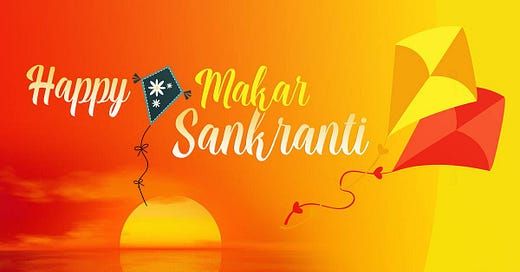




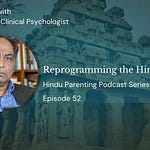
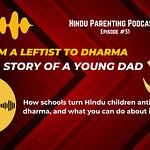
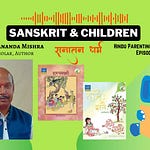

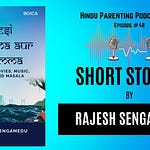
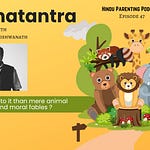
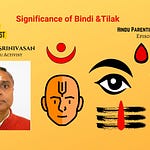

Share this post